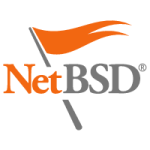Table of Contents

NetBSD on SDF VPS
First Steps
User Accounts
After you have installed and started your NetBSD VPS, go to the console and log-in as user root with the default password, “root”.
One of the first things you will want to do is change the default root password by typing “passwd” at the prompt. Don't forget this password as there is currently no way to recover it.
It is also a good habit to create a regular user account for working, using su to obtain root privileges as needed. To create a regular user account which is part of the administrative wheel group:
useradd -m -G wheel <username>
Then immediately set its password with:
passwd <username>
This user will be in the wheel group and will be able to perform administrative tasks by running su to obtain superuser privileges using the root password.
System Clock
It is customary on UNIX systems for the system clock to be set to UTC. To set the local time zone, find your zone file in /usr/share/zoneinfo/ and link to it at /etc/localtime as follows:
ln -fs /usr/share/zoneinfo/Europe/Helsinki /etc/localtime
Networking
Look at the first line of your control panel at vps.sdf.org and note YOUR_HOSTNAME (e.g. netbsd99), EXTERNAL_IP (e.g. 205.166.94.nnn), and INTERNAL_IP (e.g. 10.1.0.nnn):
VPS Maintenance Shell for netbsd99 (205.166.94.nnn / 10.1.0.nnn)
-------- ------------- ----------
| | |
| EXTERNAL_IP INTERNAL_IP
|
YOUR_HOSTNAME
Open /etc/rc.conf in an editor and, replacing the text YOUR_HOSTNAME, EXTERNAL_IP, and INTERNAL_IP with your own actual host name and IP numbers, add:
- etc/rc.conf
hostname=YOUR_HOSTNAME.sdf.org defaultroute=205.166.94.1 auto_ifconfig=yes ifconfig_xennet0="inet EXTERNAL_IP netmask 0xffffff00" ifconfig_xennet1="inet INTERNAL_IP netmask 0xffffff00"
Then put this in /etc/resolv.conf:
- /etc/resolv.conf
nameserver 205.166.94.20
Add this to /etc/hosts:
- /etc/hosts
EXTERNAL_IP YOUR_HOSTNAME.sdf.org YOUR_HOSTNAME
Run/Type:
/etc/rc.d/network restart
Alternatively, if the above does not work:
Open /etc/rc.conf in an editor and, replacing the text YOUR_HOSTNAME, EXTERNAL_IP, and INTERNAL_IP with your own actual host name and IP numbers, add:
- etc/rc.conf
hostname=YOUR_HOSTNAME.sdf.org defaultroute=205.166.94.1
Create /etc/ifconfig.xennet0 and open it in an editor. Add:
- etc/ifconfig.xennet0
up EXTERNAL_IP netmask 255.255.255.0
Then put this in /etc/resolv.conf:
- /etc/resolv.conf
nameserver DNS_SERVER_IP
Add this to /etc/hosts:
- /etc/hosts
EXTERNAL_IP YOUR_HOSTNAME.sdf.org YOUR_HOSTNAME
Run/Type:
/etc/rc.d/network restart
pkgsrc
On NetBSD you can mount a pre-built (and still in progress) pkgsrc DESTDIR. Following the procedures below will effectively install the 2000+ included packages on your virtual NetBSD system.
Note that at the moment the pre-built pkgsrc assumes that its path is /pkgshare. Some programs won't work under a different prefix since they won't be able to find their shared libraries.
mkdir -p /pkgshare rmdir /usr/pkg ln -s /pkgshare /usr/pkg rm -rf /var/db/pkg ln -s /pkgshare/db/pkg /var/db/pkg mount -t nfs 10.1.0.1:/pkgshare /pkgshare export PATH=$PATH:/usr/pkg/bin:/usr/pkg/sbin
It is read only.
To set this up on boot, execute the steps above and then:
echo "nfs_client=YES" >> /etc/rc.conf echo "rpcbind=YES" >> /etc/rc.conf echo "10.1.0.1 vps" >> /etc/hosts echo "vps:/pkgshare /pkgshare nfs ro" >> /etc/fstab echo "export PATH=$PATH:/usr/pkg/bin:/usr/pkg/sbin" >> /etc/profile
Note that you cannot use both this pre-built pkgsrc and pre-built packages from netbsd.org. It may be possible to set the system up so you can, however this is best left to the experienced NetBSD administrator.
Miscellaneous Tips
Free up disk space by removing unwanted sets
The default image comes with all distribution sets installed. You can free up some disk space by removing the ones you don't need.
First, check which distribution sets are installed:
ls /etc/mtree
Decide which sets you want to remove and examine their contents. For example, to remove games and all X11 sets:
for set in games xbase xcomp xetc xfont xserver ; do \ tar tzf /usr/INSTALL/$set.tgz | sed -e 's/^\.//' >> /tmp/purgelist ; \ done
After examining /tmp/purgelist and removing any files you want to keep, do:
cat /tmp/purgelist | xargs rm
References
$Id: VPS_NetBSD.html,v 1.23 2018/02/22 15:12:01 slugmax Exp $ NetBSD on SDF VPS - traditional link (using RCS)